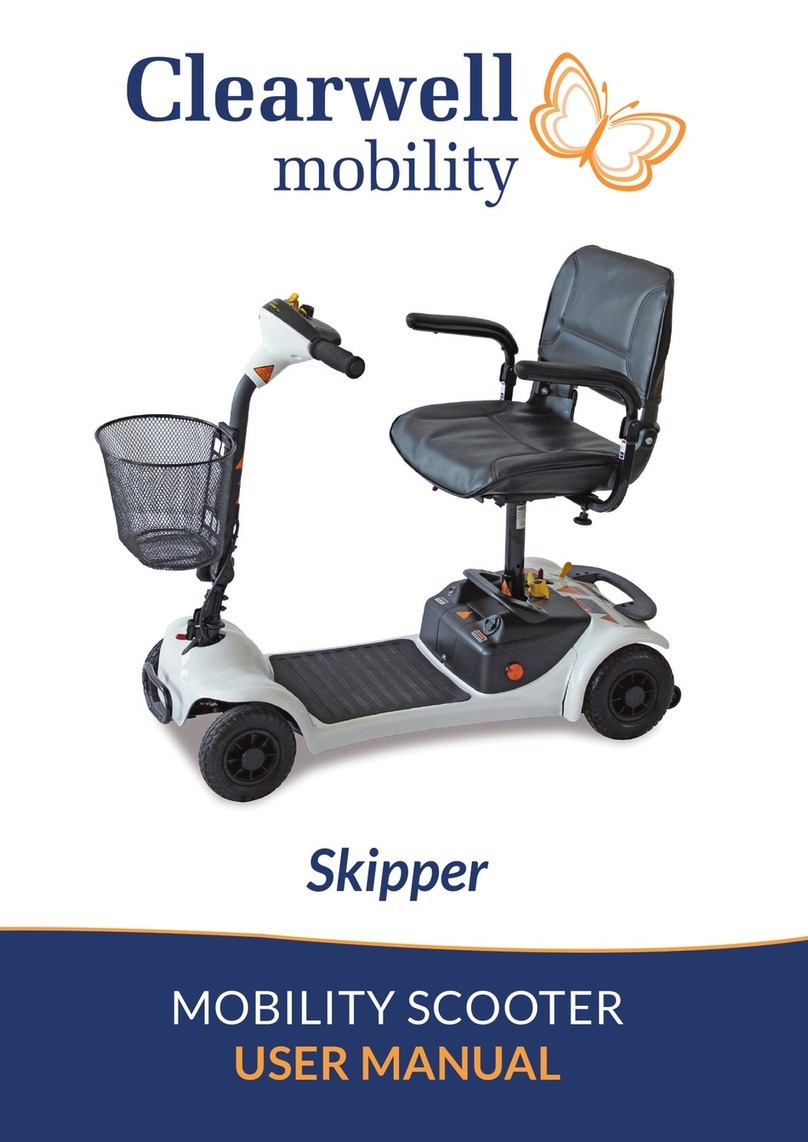
@clearwellmobility @clearwellmob 3
Dashboard Controls
Before driving your vehicle it is important to familiarise yourself with the controls.
Do not attempt to drive the vehicle until you have understood the instructions
Argent
Forward LeverReverse Lever
LightsHorn
Forward Control Lever
Ignition Switch
Ignition Switch
Battery Charger
Socket
Battery
Indicator
Speed Control
To Operate: Turn on the ignition
Finger Control: Push on the right hand lever and the machine moves forward. The more
you push the lever the faster the scooter goes. To brake, release the lever. Again the
faster the lever is released the quicker you will stop. To reverse, push in the left lever. Do
not push both levers at once.
When the vehicle comes to a stop the automatic handbrake will engage. Do not turn off
the ignition when the vehicle is moving. It will damage the braking
system.
Description of Dashboard Controls
Battery Indicator: When the ignition is switched on, the needle will move from left to
right. This instrument shows the level of charge in the batteries. When in the green area,
the batteries are fully charged. When in the yellow area, the batteries need charging
and when in the red area, the batteries urgently need recharging.
Note: When the vehicle is climbing a steep incline or starting off , the level may drop
momentarily, this is normal.
Warning Buzzer: This will sound if the battery charger is left in or the freewheel is not
engaged. If you checked both of these, turn off the ignition and turn it on again, the
buzzer should stop and the vehicle should work correctly. If the buzzer continues to
sound, there is a problem with the vehicle, contact Clearwell Mobility.
Horn: Press the button and the horn will sound. Release and the horn will stop.
Ignition Switch: Always remember to remove the key when not in use. Do not leave the
ignition on when not in use, especially when charging the vehicle.
Lights: To switch on the lights, press the button and release. To switch off, press again.

































